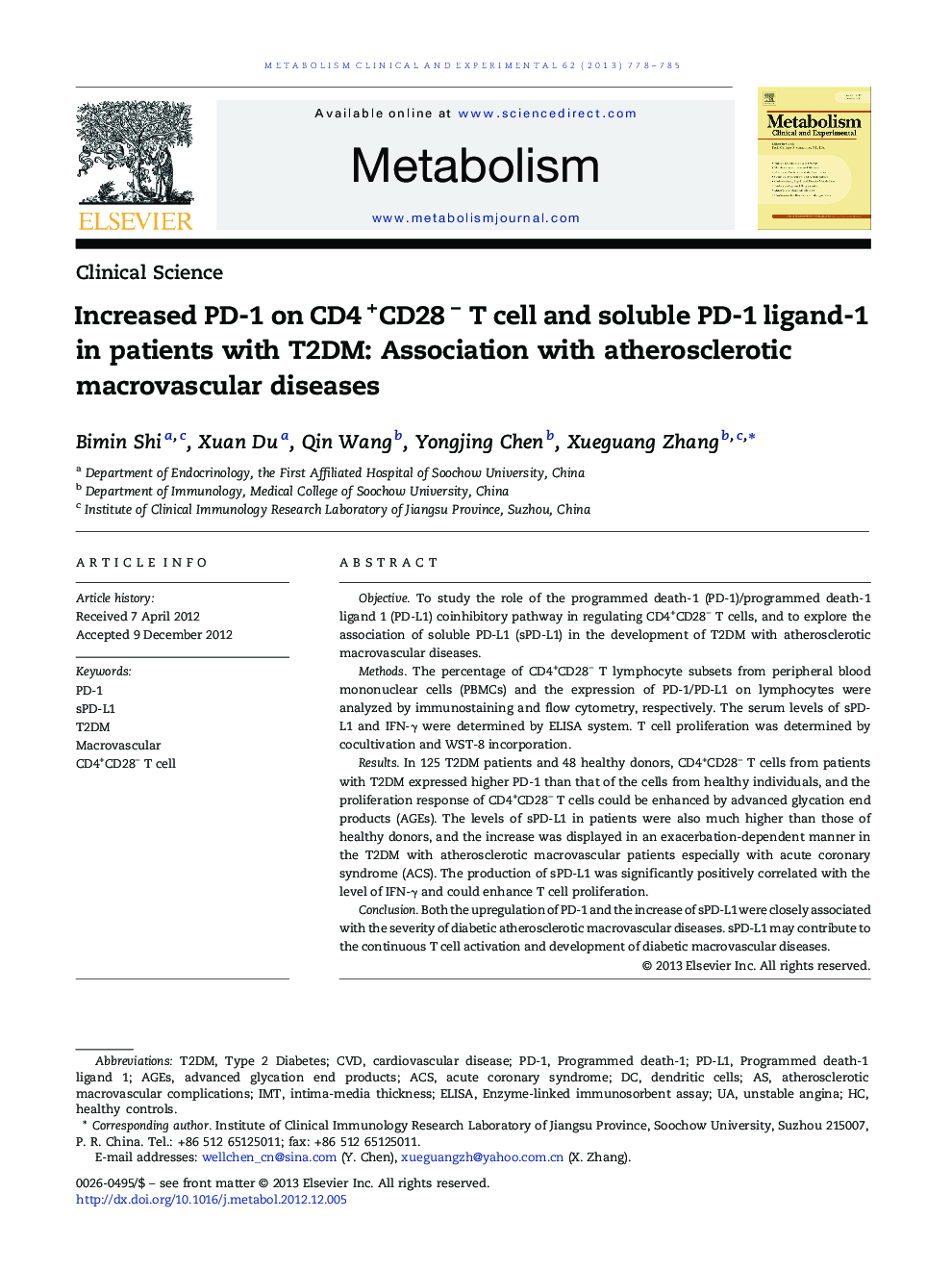| کد مقاله | کد نشریه | سال انتشار | مقاله انگلیسی | نسخه تمام متن |
|---|---|---|---|---|
| 2805519 | 1157061 | 2013 | 8 صفحه PDF | دانلود رایگان |

ObjectiveTo study the role of the programmed death-1 (PD-1)/programmed death-1 ligand 1 (PD-L1) coinhibitory pathway in regulating CD4+CD28− T cells, and to explore the association of soluble PD-L1 (sPD-L1) in the development of T2DM with atherosclerotic macrovascular diseases.MethodsThe percentage of CD4+CD28− T lymphocyte subsets from peripheral blood mononuclear cells (PBMCs) and the expression of PD-1/PD-L1 on lymphocytes were analyzed by immunostaining and flow cytometry, respectively. The serum levels of sPD-L1 and IFN-γ were determined by ELISA system. T cell proliferation was determined by cocultivation and WST-8 incorporation.ResultsIn 125 T2DM patients and 48 healthy donors, CD4+CD28− T cells from patients with T2DM expressed higher PD-1 than that of the cells from healthy individuals, and the proliferation response of CD4+CD28− T cells could be enhanced by advanced glycation end products (AGEs). The levels of sPD-L1 in patients were also much higher than those of healthy donors, and the increase was displayed in an exacerbation-dependent manner in the T2DM with atherosclerotic macrovascular patients especially with acute coronary syndrome (ACS). The production of sPD-L1 was significantly positively correlated with the level of IFN-γ and could enhance T cell proliferation.ConclusionBoth the upregulation of PD-1 and the increase of sPD-L1 were closely associated with the severity of diabetic atherosclerotic macrovascular diseases. sPD-L1 may contribute to the continuous T cell activation and development of diabetic macrovascular diseases.
Journal: Metabolism - Volume 62, Issue 6, June 2013, Pages 778–785